Covers for the armrests of the sofa: types and selection rules

In order for the sofa to be protected from external factors and to have an exclusive appearance, many housewives turn to the help of covers. As a rule, armrests are especially affected - they lean on their hands, put cups, put other things, so a special approach requires the selection of separate covers for the armrests. Let's take a closer look at this textile product.
What are they?
This item is not often found in the store. Basically covers for sofa armrests can be classified according to the type of attachment.
- On an elastic band... Such a product reliably fixes the fabric and prevents it from slipping. Simple, comfortable and stable piece, but not suitable for every type of armrest.
- Velcro or zip closure. On the inside of the armrest, such a sample is worn without fasteners, because, as a rule, it is made clearly in shape, and from the outside it is attached with Velcro or a miniature lock that is not visually visible.
- Eurocover... Can be sewn for armrests of any size and shape. Basically, the product is made of natural or cotton fiber rubberized fabric with the addition of acrylic, polyester, elastane.
- Cape. A universal option for those who want to preserve the quality of the sofa cover in the armrest area, but do not want to waste time buying and sewing covers. It is recommended to use heavy, dense fabric to cover the armrests.
- Customized. The best option when buying is to order a custom-made case. In this case, the covers will harmoniously fit the armrests, they will not wrinkle and form folds, the hostess can easily and quickly remove the product for washing and put it back on.
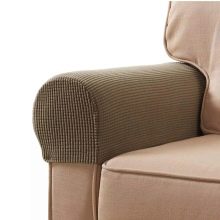

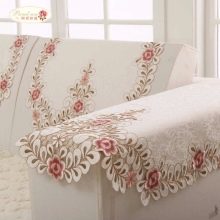
Materials and colors
Most often, synthetic raw materials are used for sewing. Artificial fibers give the fabric elasticity and strength, which is very important for the manufacture of products of non-standard shape. In addition, these fabrics are usually quite resistant to dirt and have increased durability. Natural materials also have their advantages, for example, such fabric breathes, does not cause allergies, and gives pleasant tactile sensations.
Whichever option you choose for sewing, consider the features of further care. It is best to wash the covers in the "delicate" wash cycle. Turn the copy inside out before placing it in the washing machine. Remember that these covers get dirty quickly, the material must withstand multiple treatments, however, synthetic fabrics fade faster with frequent washing.
Anti-vandal fabrics deserve special attention. They are most often chosen by cat owners. Animal lovers know that a cat's favorite spot on the couch is the armrest. It is convenient to lie on it, and sometimes sharpen your claws. Covers made of anti-vandal materials also cope with this task.
They have increased strength and density, and the holds are invisible due to their resistance to thread pulling and tearing. Such fabric does not wipe off and does not wear out for a long time, as it is impregnated with Teflon coating or scotchguard. This protective coating prevents moisture and grease from absorbing and is breathable. The sliding effect prevents the cat from damaging the surface of the armrest with its claws.
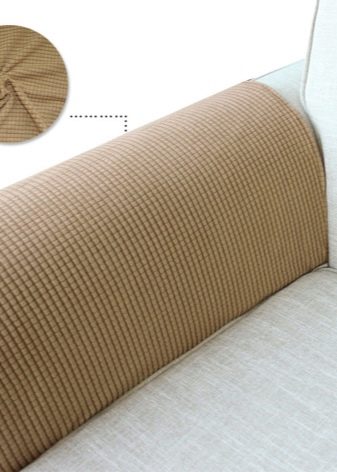
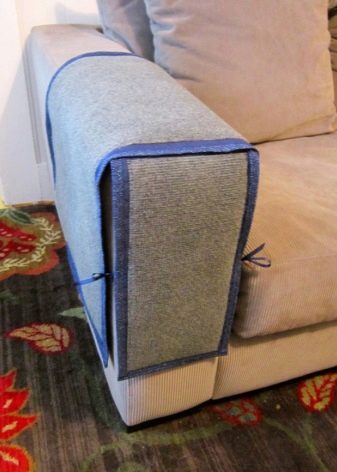
Anti-vandal materials are non-woven and woven. The first category includes flock, relaxation, artificial suede, and the second group includes chenille, microfiber, jacquard, tapestry. The first option has a longer service life, washes well, is pleasant to the touch, therefore it is more popular when sewing armrest covers.
Separately, it should be said about the possible colors of the covers. When choosing a shade, be guided by the general color scheme of the interior of the room. Armrests should be made to match the finishes and decorative details. If children and animals live in the house, then give preference to dark covers or products with a pattern.
Most often, armrest covers are sewn from material to match the main upholstery, but connoisseurs of everything new and modern can try to sew armrest covers in a contrasting color. For example, a black sofa with white armrests will look beautiful, and in the eco-style interior, you can pick up beige or brown covers for a green sofa.
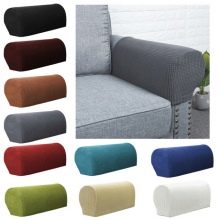
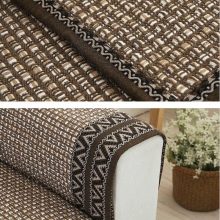
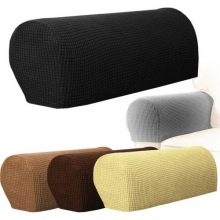
How to sew?
If a beginner is engaged in the execution of the product, then it is better to choose a cotton fabric - it is more convenient to sew from it, moreover, this material is well washed. After choosing a suitable material for sewing, wash it, dry it and iron it to avoid shrinkage of the finished product. Now you can start the process. Prepare:
- tape centimeter;
- threads;
- needles;
- tailor's pins;
- scissors;
- chalk or soap;
- sewing machine.
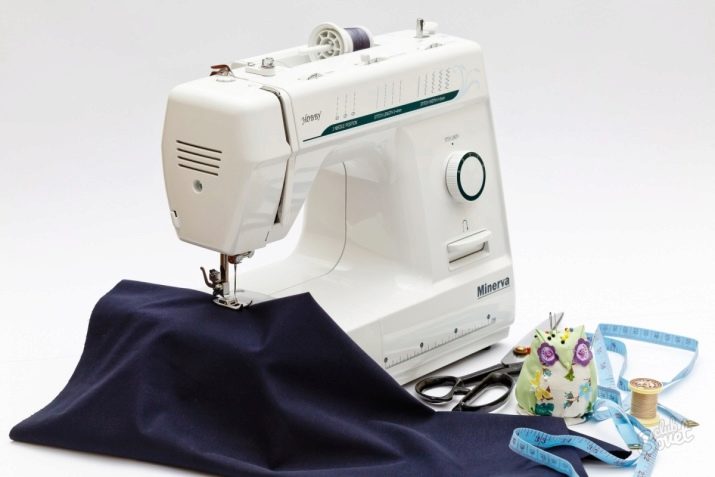
Take measurements first. Design them as if the armrests are in a clear rectangular shape to avoid significant miscalculations. Write down the data obtained and add 3 cm to each parameter - these will be the seam allowances. Further sewing is as follows.
- Apply marks on the canvas in accordance with the measurement indicators. Remember the allowances.
- Cut out the details. In total, you should get 4 elements for each cover - 2 side rectangles, 1 top and 1 end. If the handles are slightly rounded, then the last element can be made rounded, and the two side and upper parts can be cut out in one piece.
- Sweep or pin off carefully with pins.
- Turn the resulting sample outwards and slide onto the armrest. Correct the shape if necessary. If the cover sits well, then connect the parts with a sewing machine.
- Remove excess threads and fibers and make sure the seams are strong and secure.
- If you wish, decorate the finished product with decorative details and put it on the armrest.
- Follow the same steps for the second armrest.
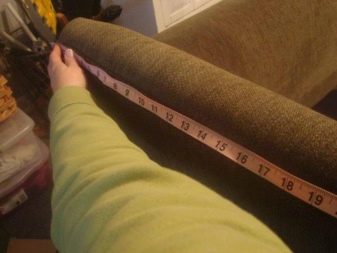

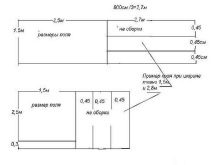
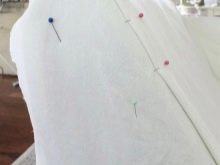
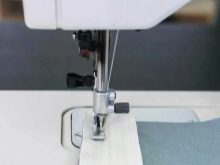
See below for a master class on sewing an armrest on a sofa.








